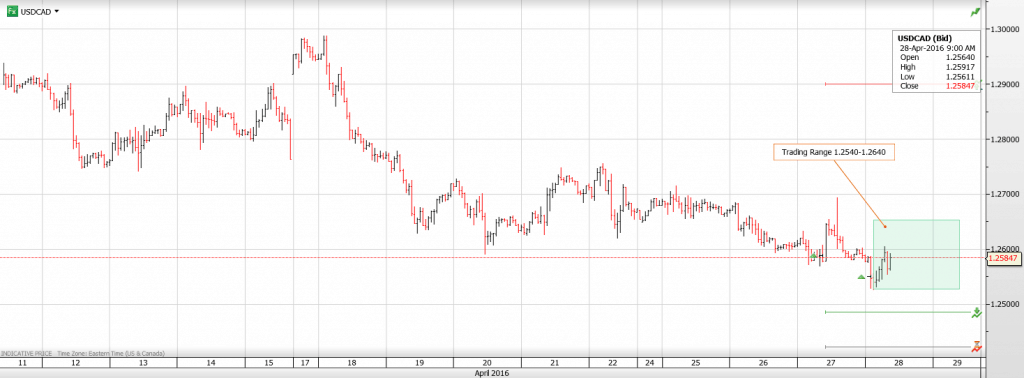USDCAD Overnight Range 1.2529-1.2605
The US dollar shrugged off a mildly weaker Q1 GDP report (Actual 0.5% vs. forecast 0.7) because it merely confirmed what everyone know-Q1 was weak. Jobless Claims were strong and that has helped EURUSD to drift lower.
It was a wild and woolly FX session, especially in Asia, triggered by a trio of central banks chanting “rates unchanged”. First up was the FOMC in the New York afternoon. Not only did they leave rates unchanged but they delivered a rather ambiguous message that did not satisfy hawks or doves.
A little while later, it was the RBNZ’s turn. They left rates unchanged (2.25%), were fairly upbeat on the economy and whined about the level of the exchange rate. Kiwi soared from 0.6815 to peak at 6988,
Rumours of BoJ stimulus action, fueled by the BoJ governor himself proved to be unfounded. The BoJ left rates unchanged and downgraded growth forecasts, The Nikkei tanked as did USDJPY, falling from 111.70 to 107.92.
The European session was a little calmer. EURUSD drifted higher but without much conviction. Conviction was lacking in GBPUSD as well as it bounced between 1.4540 and 1.4620.
FX markets will get a chance to second guess the FOMC this morning with the release of Q1 GDP, forecast to rise 0.7%.
USDCAD is skittish. After touching 1.2529 in thin Asia markets it has rebounded and traded erratically within a 1.2540-1.2620 band. USDCAD may be vulnerable to further downside moves due to expected USDCAD selling for month end portfolio rebalancing and if Canada GDP surprises to the upside.
USDCAD technical outlook
The intraday USDCAD technicals are bearish looking for a decisive break of 1.2550 to extend losses to 1.2480. A move above 1.2660 is required to negate the downward pressure and shift the focus back to 1.2720. Meanwhile the short term technicals are bullish while above 1.2660. For today, USDCAD support is at 1.2540 and 1.2520. Resistance is at 1.2620 and 1.2660.
Today’s Range 1.2540-1.2630
Chart: USDCAD 1 hour.






